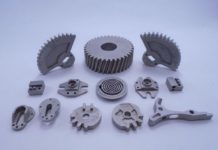Roberto Paoluzzi –

For some time, we have started increasingly feeling the concept of improving products offering to the market what it requires. In this scenario, precisely the market demands drive the market (“market pull”), which indicates what characteristics are expected in new products. In the short-term, the approach is perhaps correct but is it able to satisfy actually the development requirements of developed economies?
In my opinion, the answer is certainly negative. If at the end of the Nineteenth century we had asked travellers what they would need, the answer would have been probably oriented to faster horses and more comfortable carriages. We would have found it hard to perceive the advent of the car or of the air transport. The reference is probably paradoxical but, to a certain extent, illustrative of what we should bravely imagine to go on winning the competitive challenge. Keeping on offering to the market what it precisely asks for is a strategy targeted to the incremental innovation but it raises the risk of finding those who can offer the same things at a lower price or with higher efficiency. If we make the demand level uniform (the globalized market is the same for all) the only degree of freedom for competition is the efficiency with which we accomplish the target.
If instead we succeed in imagining something new, of which currently the market neither knows the existence, then we open much wider prospects of innovation and competitiveness, maybe at the beginning not so remunerative but with positive outcomes in the medium/long term.
It is not advisable to make the usual comparison with consumer electronics, too distant from our hydraulic world, but instead preferable to analyse the data by Tesla Motors, Inc. in the third four-month period of 2012, the visionary company sold few units while at the end of 2015 they exceeded 20000, in line with their minimum target. Forecasts envisage a progressive lowering of the offer range, towards runabouts, to exceed 500000 units/year within 2022, 50% of which in the so-called “lower end” (Reuters).
Several of the available innovations in the hydraulic world nowadays find it hard to enter deeply because the market seems not to ask for them or because the market is deemed not to be in the right conditions to welcome them when proposed. We are referring to the use of alternative materials to metals, especially technopolymers, to hybrid integrated systems of electrical-hydraulic type and to independent metering systems. All technologies that have been present for some time in narrow application niches but never sufficiently “pushed”. Likely, the hydraulic sector, strongly conditioned by being a system inside other products, is not suitable for a pure “market push” approach, but perhaps a right mix between the two might enhance the innovative boost of the sector, maybe starting from the attack of those pioneering markets that are attempting the discontinuous innovation. If we consider just the mobile sector, the higher and higher interest in the issues of the energy efficiency and of the environmental sustainability can constitute a good driving engine, identifying those manufacturers that are interpreting the future in the most “visionary” way and offering them componentry able to be as innovative. Concerning how orienting ourselves in the intricate maze of new technologies and their potential acceptability by the market, more or less speculative visions and authoritative outlooks are not missing but we invite you to consider at least the Hype Cycle for Emerging Technologies, one of the best representations of how we can analyse the possibilities offered by new technologies in the various sectors (http://www.gartner.com). Intentionally, we do not want to make concrete examples: in this review, you will have the opportunity of identifying clearly to what we may refer.



